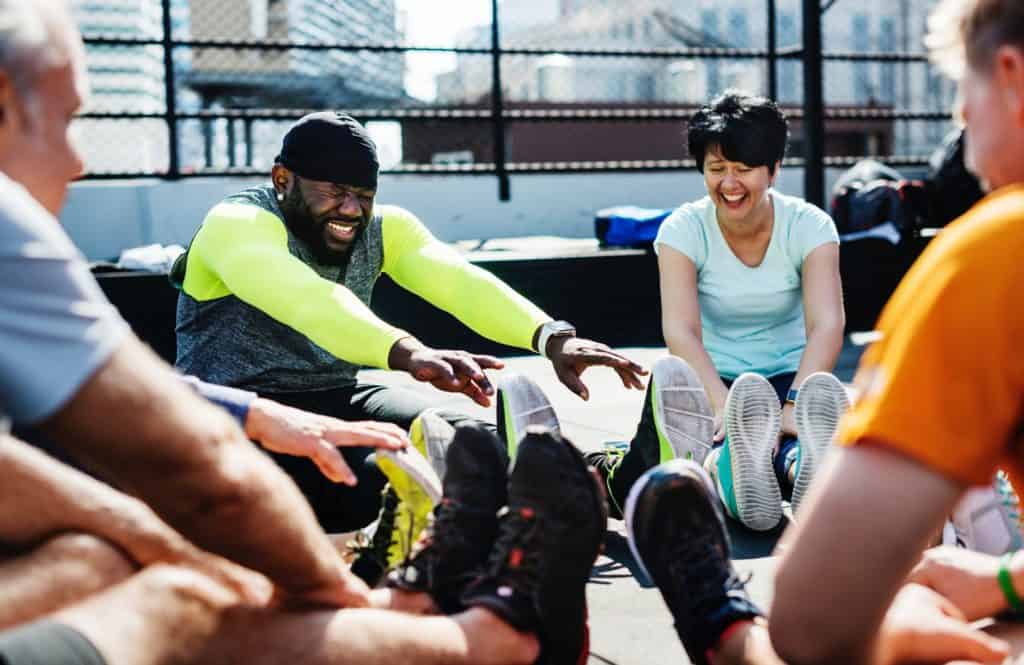Active vs Passive Recovery
While a consistent, disciplined, and progressive weight training program can be great for muscle development, endurance, and overall health (not to mention having a fitter looking body), it can have consequences. This is especially true if you consistently execute in the gym without giving your body a chance to recover. Not taking enough time to do the ‘smaller’ things like sleep, stretch, and properly fuel your body can be disastrous to your overall progress.
This is where the concept of rest days come into play. If you’re serious about exercise, you can’t expect to just dive in full-bore for as long as possible without them. We need to remember that recovery is as much a part of staying fit as our daily movement and nutrition routines themselves. In fact, every day nutrition, and even movement, are parts of a proper post-workout recovery.
The Importance of Rest Days
It’s normal to feel a bit sore after intense exercise routines. That means your muscles are on their way to growth, provided you nurture them and build a growth environment. Taking that soreness in stride and pushing yourself unreasonably hard without giving your body a chance to feel sound again is another story. This can not only reduce the quality of your fitness or bodybuilding routines; it can also damage your muscles, joints and tendons enough to make your results literally counterproductive for fitness.
With rest days, either of the active or passive kind, you’re letting your muscle tissues, joints, tendons, and other key parts of your body repair themselves. This will allow for even harder training capacity later on.
This is something you don’t want in life and it’s something that you certainly don’t want to push to its extremes. Mitigating it is easy through both passive and active recovery days that you apply to your main exercise routine. Let’s start with the passive model.
Here’s how to handle this balance.
Passive Recovery Strategies
Passive recovery time is pretty much exactly what its name implies: an opportunity to be justifiably sedentary until your body has had time to handle an excessive workout you gave your muscles, tendons and bones.
In other words, with passive recovery you’re maximizing sedentary activities. That means you don’t do much in terms of movement until your body is feeling better. When it comes to being sedentary, it is addictive. If you have ever taken a week off from the gym and struggled to get back into it afterwards, that is why. You should make sure that any longer term passive recovery doesn’t in any way affect your overall willpower for going back to exercise routines or being active. One of the key ways to achieve this is by remembering that passive recovery is generally supposed to be a much more serious measure.
This means that you should apply passive recovery mode only if you need to convalesce from more serious exercise or other bodily injuries. Off days are a good thing, but passive recovery is not supposed to be a regularly occurring, multi-day ‘off from all activity part’ of your weekly and monthly workout schedule unless absolutely needed. Good passive recovery activities for those off days (and even during the hours after a workout) include:
Meditation
Taking the time on off days to calm your mind and place your body into a state of calm, meditative repose. This can reduce your overall stress levels and help you sleep for faster results on muscle healing.
Massages
Getting a professional and carefully applied massage for your muscles is a very passive activity, but it can work wonders for loosening muscles, relaxing your mind and making your body feel less sore. This is a useful passive activity.
Need some help?
Shape Success, Live Exceptionally
Hit that button, and get started today.
Sleeping
One other part of passive recovery that should be practiced consistently is plentiful, disciplined sleep. This means getting a good night’s sleep. You could also possibly take brief naps at specifically scheduled times of the day during both exercise rest days and active days.
Nutrition
While not technically ‘passive’ it fits the definition I am going with here, as it does not involve much movement. Feed your muscles properly by adhering to a quality diet based around whole foods, high protein intake, and enough calories to repair your muscles and reach your goals. Post-workout nutrition is one of the most important recovery steps out there!
Active Recovery
With active recovery, you do one fundamental thing; this is that you stay moderately or lightly active even on workout rest days. Active recovery means gently keeping your muscles in motion even on days in which you don’t train hard. You have to carefully measure the lightness of this recovery mode, but some key aspects of it include the following:
Avoiding further harm: If you know that your muscles need to recover during no less than X days from a hard workout, then stick to this. Don’t feel pressured to go back to heavier workouts prematurely. This is the essence of avoiding pointless harm.
Light training on off days: Your recovery days will still involve moderate physical activity during active recovery. This is important for bodily flexibility and maintaining an active mindset. In particular, take advantage of recovery days to lightly train the muscles you used less during your last heavy exercise session. Examples of light activity include:
- Taking moderately long walks
- Going for a gentle hike
- Enjoying a swimming session
- Taking time for yoga and stretching exercises
- Light resistance exercise without straining recovering muscles
As you can see, active recovery means just that; staying active, while always keeping in mind that muscle needs to avoid constant heavy strain. This mentality is the core of active recovery activities.
Seeking Professional Exercise Guidance
Despite the seeming simplicity of keeping active and passive recovery in mind, it’s easy to get mixed up on your own lifestyle-specific recommendations for each of these recovery modes. This is where a trained professional fitness expert can help you enormously. Working with an experienced trainer can let you know exactly how to structure your exercise and rest days. They can help you determine what routines are best for your situation.
Let Us help You Out
At CONDITIONerd we are here to help you achieve better physical and mental health through exercise. Check out the plans we offer to our customers and see if you could benefit from working with our team. And if you have questions, you can always contact a CONDITIONerd team member.
Personal trainers, like those found here, can help guide you on your pathway towards reaching your fitness goals, whether that is getting bigger, stronger, faster, more lean, or just generally feeling better.
We can get you setup with a periodized workout plan, supplement information, and advice on nutrition to help you reach your goals.
The only thing you need is some motivation and a willingness to change some old habits.
Get into contact with us to find out what membership is right for you. In a CONDITIONerd program, you’ll be surrounded by others who can help you to get where you want to be.
Generally, our clients start to see some pretty awesome changes in 2-3 months time, some sooner.

